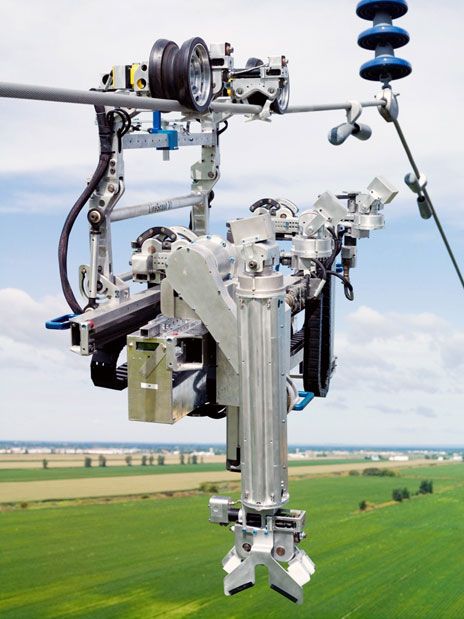
Hydro-Québec's LineScout rolling on a high-voltage line. Image: Hydro-Québec
Canada's Hydro-Québec Research Institute started the LineScout project after the1998 North American ice storm that led to massive power outages and left millions of people without electricity for several days. The idea was to have a small mobile robot that could be able to roll on high-voltage transmission lines and de-ice them.
The first line scout was a little rover that would hang head down like a sloth and was equipped with claws to break the ice. The new generation, featured in a recent IEEE Spectrum article, is larger and equipped with cameras and a thermo-infrared imager. The remote-controlled robot has been used dozens times to do inspection and maintenance on high-voltage lines (2000 amps, 735 kilovolts). It uses cameras to inspect line conditions and discover irregularities, while also employing a smart navigation system to pinpoint locations in need of attention.
Japanese robotics company HiBot and the Electric Power Research Institute in the United States are also developing power line inspection robots.
Canada's LineScout has arms to maneuver over obstacles such as splices, hardware components, and aircraft warning markers. Unlike with conventional transmission line servicing, the robot can service the lines while they are energized, saving precious company resources, reducing safety risks and downtime.
The robot was recently tested on the BC Hydro transmission lines -- a project that last June received the prestigious Edison Award from the Edison Electric Institute. The video below describes the technology and the tests conducted on Western Canada's rugged terrain.



Amazing solutions.
ReplyDelete